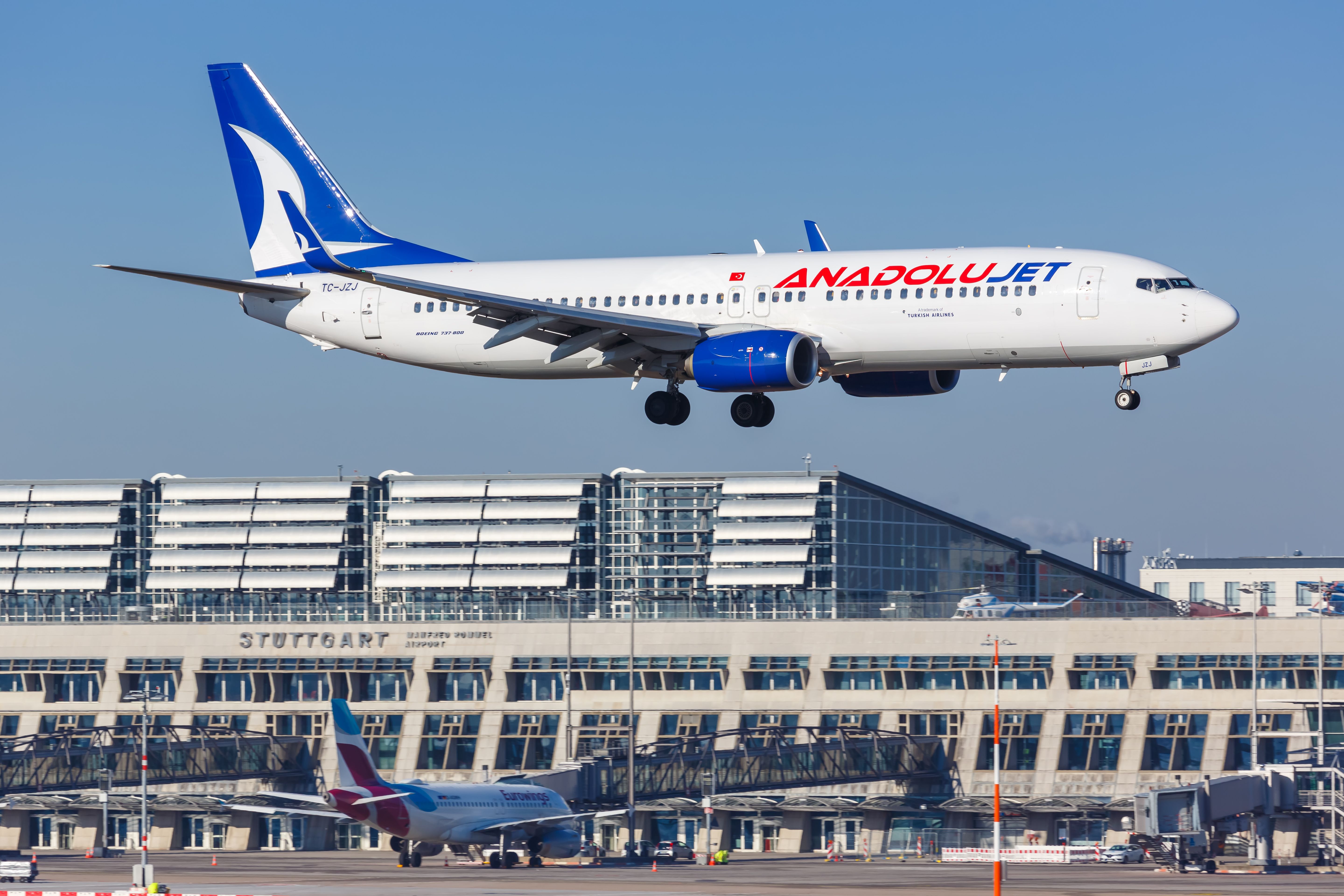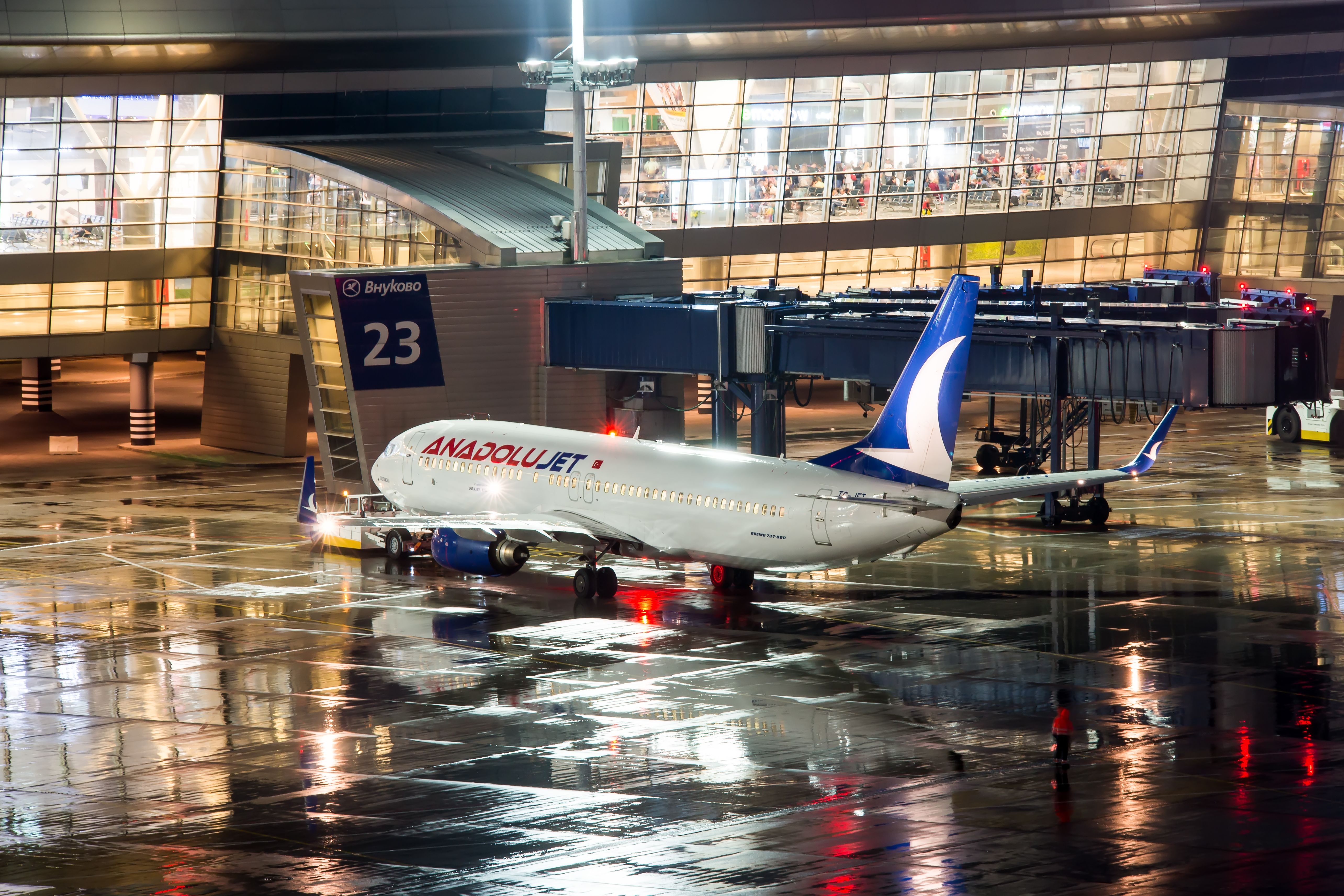Summary
- An Anadolujet Boeing 737-800 had to divert to Ercan International Airport due to an engine issue shortly after takeoff from Dalaman Airport.
- A video of one of the plane's engines on fire circulated on social media, although its authenticity could not be verified.
- The aircraft remained grounded for almost 9 days before finally departing for Ankara, with the engine suspected to have been damaged by a bird strike.
On July 4th, an Anadolujet Boeing 737-800 flying from Dalaman International Airport (DLM) in Turkey to Beirut–Rafic Hariri International Airport (BEY) in Lebanon had to divert due to an engine issue. With the problem arising just north of the Cyprus coast, the aircraft diverted to Ercan International Airport (ECN) about an hour after leaving.
Flight and incident details
The Anadolujet service TK7846 departed Dalaman on July 4th at 21:40 local time. This nighttime flight was operated by a 21-year-old Boeing 737-800 registered TC-JKY. According to The Aviation Herald, while en route at FL390, the right-hand engine rolled back slowly; afterward, the Exhaust Gas Temperature (EGT) started to rise and went above limits, prompting the crew to divert to Ercan in the Turkish Republic of Northern Cyprus.
A video posted to Twitter taken by a passenger on the flight circulated on social media. The clip shows one of the plane's engines on fire. However, L'Orient-Le Jour, a French newspaper in Lebanon, was unable to verify the authenticity of the video.
After shutting down the engine, the crew started its descent as it made its way to Ercan. The 737 landed at Ercan on runway 29 at 22:31 local time. This was about 30 minutes after leaving the cruising altitude of FL390 and just over one hour after the initial departure.
The 30 passengers and six crew members were then taken back to Turkey due to international restrictions and then flew to Beirut, arriving hours later, according to the airline. The scheduled return flight at 23:30 between Beirut and Dalaman aboard the same aircraft was canceled.
The aircraft stayed on the ground in Ercan in North Nicosia for almost nine days after landing. At 01:04 local time on July 13th, the aircraft finally departed Ercan for Ankara (ESB), arriving in Ankara at 01:59 local time.
The 737-800 entered into commercial service later that day with a domestic flight to Adana (ADA). While the cause of the engine failure is still being investigated, it is presumed that a bird strike on one of the previous flights may have been involved. The CFM56 engine was replaced.
A little more about TC-JKY
The Boeing 737-800 registered TC-JKY is a 21-year-old airframe. The aircraft was first delivered to Pegasus Airlines in April 2002 through a lease from GE Capital Aviation Services, operating under the registration TC-AAP until May 2011. The aircraft was then leased to XL Airways France in August 2011, where it operated under the registration F-HJER until February 2014, before its current operator, Anadolujet, acquired the jet in October 2014. At present, the aircraft is configured in an all-economy class cabin in a 3-3 configuration.
The aircraft is fitted with two CFM International CFM56-7B26 turbo-engines. CMF International is a joint venture between GE Aerospace and Safran Aircraft Engine. Over 33,000 CMF56 engines have been delivered, accumulating more than one billion flight hours on aircraft of more than 600 operators.
The CFM56-7B is the exclusive engine for the Boeing 737NG family, with close to half of all CFM56 engines installed on 737 aircraft. Furthermore, the 56-7B is the engine of choice for the Boeing AEW&C and P-8 Poseidon military aircraft.
Sources: The Aviation Herald; FlightRadar24.com


